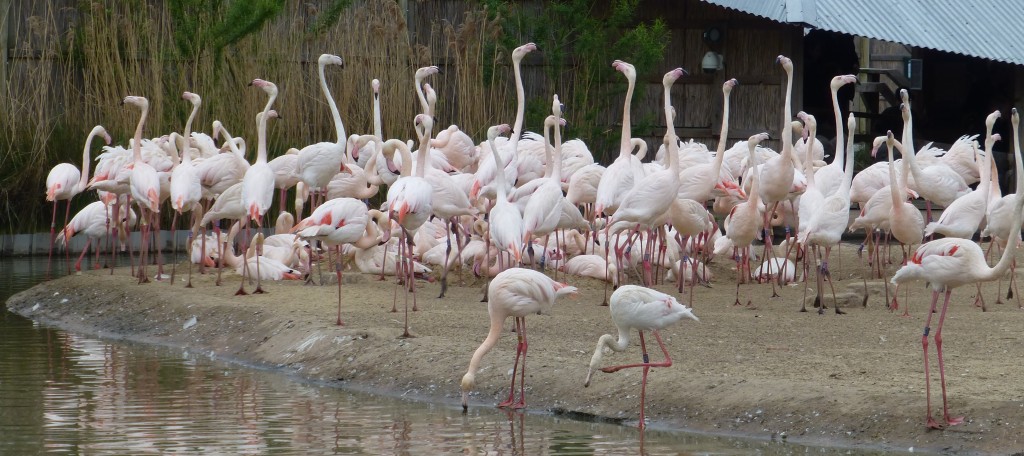Two for the price of one!
If you're planning on visiting WWT Slimbridge any time soon, make sure you swing by the greater flamingo flock in Flamingo Lagoon because the nesting season is looking very exciting this year. Not only is there a large group of nesting birds at the front of the nest island, near the viewing area, but there is a new nesting group formed towards the back of the island. So you can get the bonus of seeing two distinct nesting colonies in the same enclosure. I'm sure that means double the excitement :-)
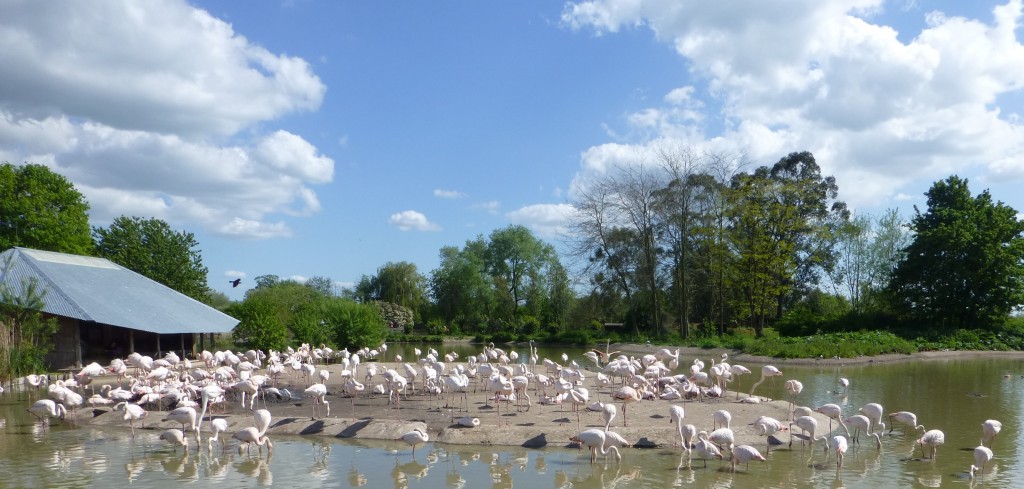
If you want to see where the flamingos are nesting, have a look at the photo above. There is a large mass of birds on the far left of the photo (near to the viewing hide) and then there is another group of nests to the far right of the photo (near to the "main" pond itself). You can see birds sat down incubating eggs and building nests.
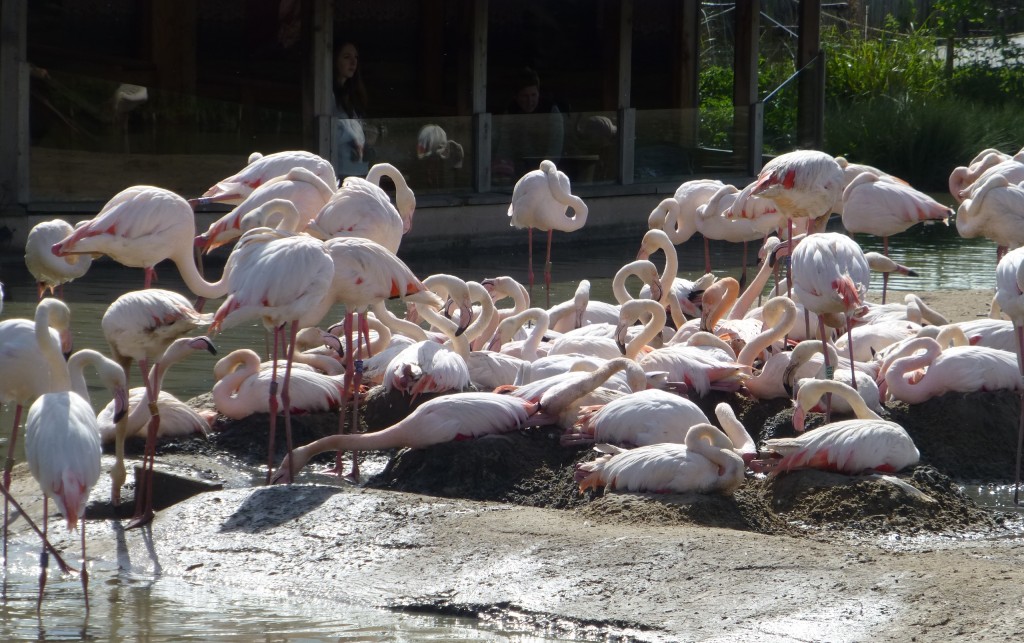
A close up into the heart of the colony (you will get a really good view of this from the hide) shows that birds have packed their nests close together, which is a feature of all flamingo nest sites. You can see deep channels that the bird's excavate between the nests as they continue to make their nest mounds taller and taller. Sparky, Phil and co. will flood water into these channels from time to time, keeping the sand and mud soft and pliable, so that the birds can keep building. Once chicks start hatching, the nests will be left to dry out so that chicks stay warm, fluffy and dry.
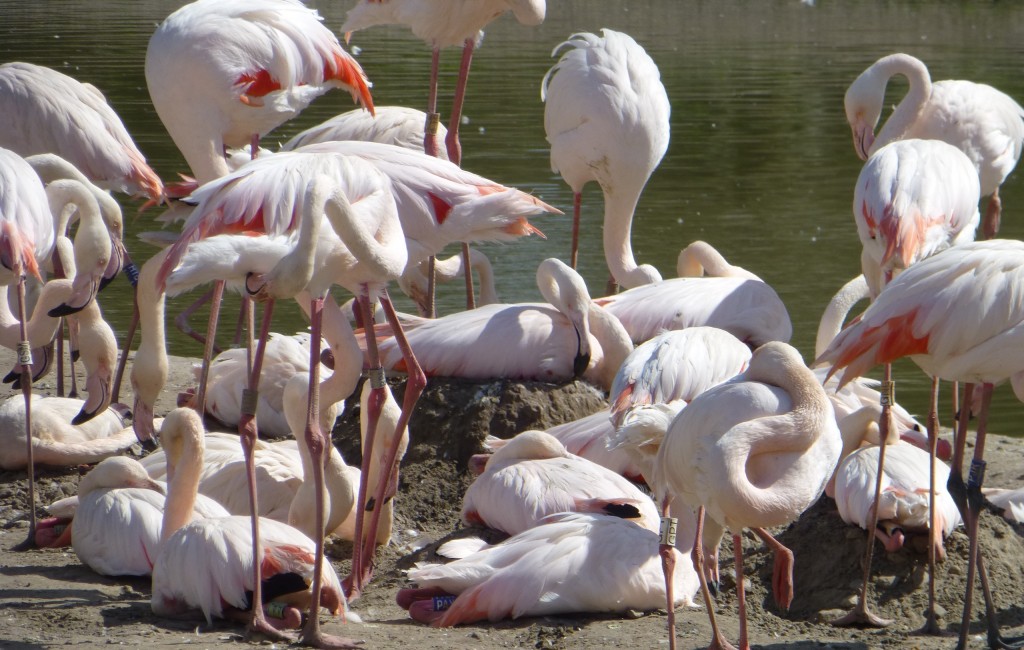
Over the course of the breeding season you will be able to see each nest mound get taller. I have talked about why flamingos keep building in previous posts; their nest is really a very ingenious design, a masterpiece of evolution you might say!
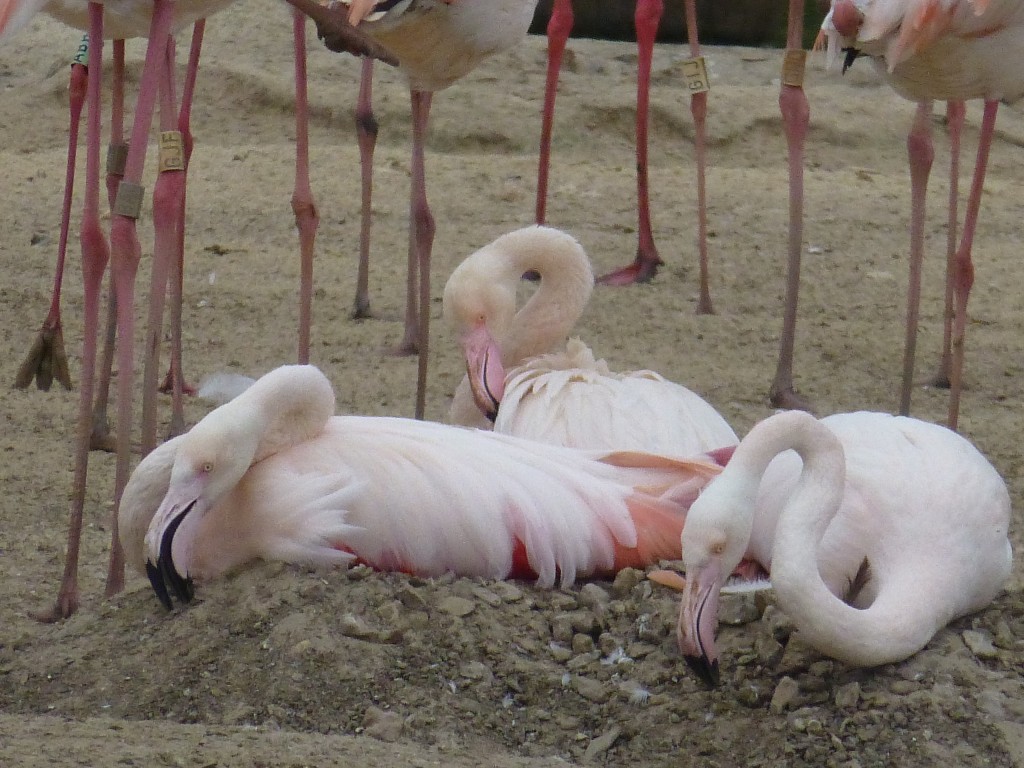
These few pioneering birds, the above photo shows them starting out building nests in April, are the "break-away" group that began a new set of nest sites on the other side of the island. You can see how the flamingo builds its nest mound in this picture, especially the bird on the left who is using its beak like a pickaxe to break away small pieces of mud which can be dragged to the top of the mound.
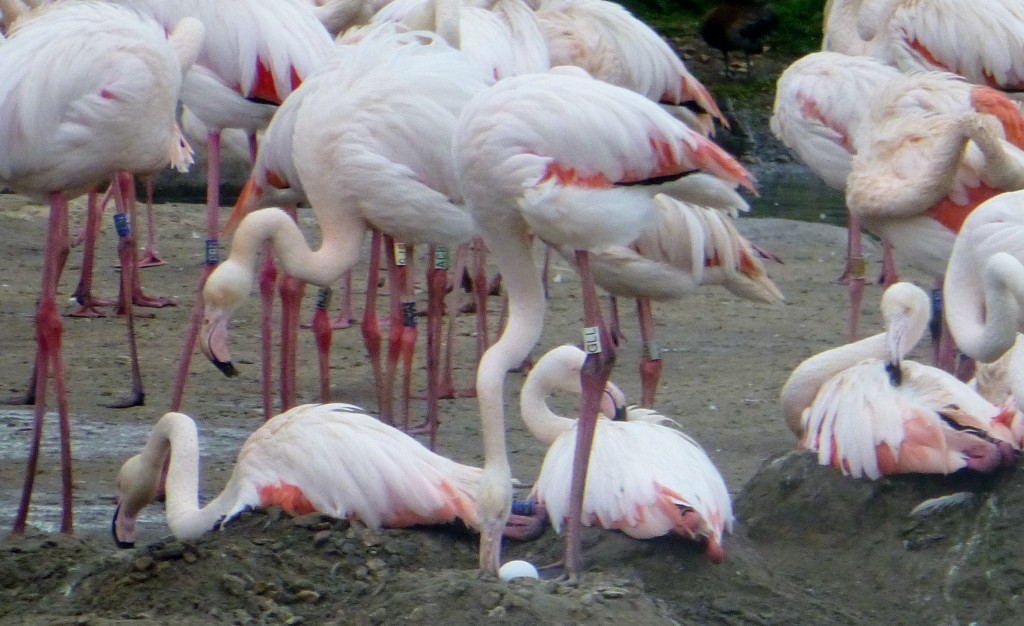
And the new nesting area grows! These birds are now incubating and chicks should, hopefully(!), be pattering around soon. The bird in the photo above is re-arranging itself on its nest. If you are patient and watch for long enough, you will see birds stand up and this is always a good time to see just what they have been sitting on.
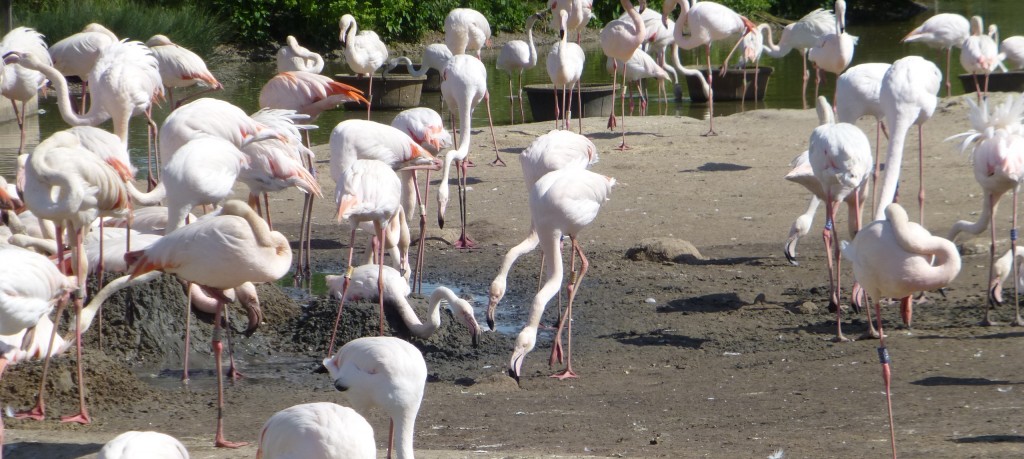
So, why do we have two lots of breeding greater flamingos this year? Well, the flock has relaxed and settled well into its new breeding around. For those that remember, 2014 was the first year that the greaters bred in Flamingo Lagoon, having had a year off after they were moved into it. They now appreciate the space on the nesting island and can make use of all of the potential nest sites available to them. This behaviour also tells you about the activity of the flock as well, and the personalities within it. We know that not all birds get on, and that some birds will choose to ignore others. So it is probable that these two "camps" have set up because some individuals simply want to nest in a different part of the enclosure, away from others. Just as flamingos will space themselves out into different parts of the same habitat in the wild, so have these flamingos at WWT Slimbridge.
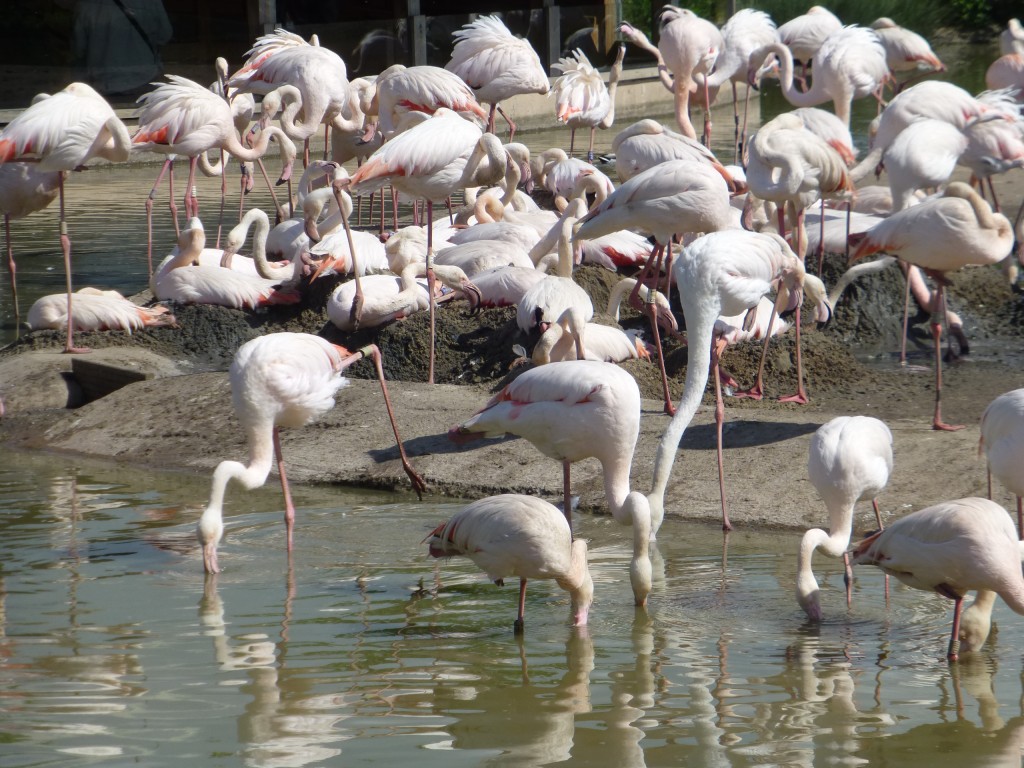
Without tempting fate, greater flamingo chicks normally appear towards the end of May. The mass of nests and many pairs of watchful eyes normally keeps the chicks safe from harm. And whilst not all birds are nesting, there are those that are carrying on with their courtship display. Just as we saw last year, once again there is a complete picture of the breeding cycle of the flamingo within Flamingo Lagoon. Dancing, pair-bonding, nesting and incubating flamingos all in one group. Plus now two distinct nesting areas. Now that is something pretty special :-)
